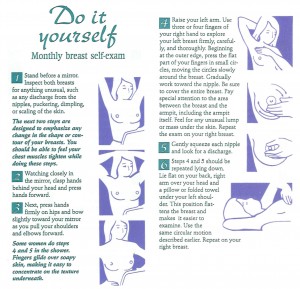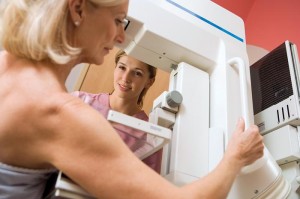October 19th is Mammography Day
As we are all aware, or at least should be by now, October is Breast Cancer Awareness month. Today, October 19th is actually Mammography Day. With that being said, have you had your mammogram yet? There is no need to worry or be afraid. A mammogram can be intimidating, however early detection could save your life.
A mammogram allows your doctor to have a closer look for changes in breast tissue that cannot be felt during a breast exam. It is used for women who have no breast complaints at all, and for women who have breast symptoms, such as a lump, change in the shape or size of a breast, nipple discharge, or perhaps pain. Breast changes occur in almost all women. In fact, most of these changes are not cancer at all and are called “benign,” but only a doctor can know for sure. Breast changes can also happen monthly, due to your menstrual period. A mammogram is a low-dose x-ray exam of the breasts to look for changes that are not normal.
used for women who have no breast complaints at all, and for women who have breast symptoms, such as a lump, change in the shape or size of a breast, nipple discharge, or perhaps pain. Breast changes occur in almost all women. In fact, most of these changes are not cancer at all and are called “benign,” but only a doctor can know for sure. Breast changes can also happen monthly, due to your menstrual period. A mammogram is a low-dose x-ray exam of the breasts to look for changes that are not normal.
Finding breast cancer early greatly improves a woman’s chances for successful treatment if needed. The American Cancer Society recommends that a woman obtain her first baseline mammogram between the ages of 35 to 40. Women 40 years and older should get a mammogram every 1 to 2 years. Additionally women who have previously had breast cancer or other breast problems or who have a family history of breast cancer might need to start getting mammograms before age 40, or they might even need to get them more often.
Checking one’s own breasts for lumps or other unusual changes is called a breast self-exam, or BSE. This type of exam cannot and should not replace regular screening mammograms or clinical breast exams. In clinical trials, BSE alone was not found to help reduce the number of deaths from breast cancer. You should perform a BSE at least one monthly and report and changes to your doctor immediately.
For most women with private insurance, the cost of screening mammograms is covered without copayments or deductibles, but women should contact their mammography facility or health insurance company for confirmation of the cost and coverage. Medicare  pays for annual screening mammograms for all female Medicare beneficiaries who are age 40 or older. Medicare will also pay for one baseline mammogram for female beneficiaries between the ages of 35 and 39.
pays for annual screening mammograms for all female Medicare beneficiaries who are age 40 or older. Medicare will also pay for one baseline mammogram for female beneficiaries between the ages of 35 and 39.
Even if you have no medical insurance, don’t let that stop you from getting a mammogram. Some state and local health programs and employers provide mammograms free or at low cost. For example, the Centers for Disease Control and Prevention (CDC), coordinates the National Breast and Cervical Cancer Early Detection Program. This program provides screening services, including clinical breast exams and mammograms, to low-income, uninsured women throughout the United States and in several U.S. territories. Contact information for local programs is available from the CDC by calling 1–800–CDC–INFO (1–800–232–4636).
You can also contact The Beaufort Memorial Hospital, Mammography Center for more information or to set up your appointment. Located at, 955 Ribaut Road, Radiology Department, Beaufort, SC 29902 (843) 522-5015.
Information about free or low-cost mammography screening programs is also available from NCI’s Cancer Information Service at 1–800–4–CANCER (1–800–422– 6237) and from local hospitals, health departments, women’s centers, or other community groups.
Spread the word. Tell your friends, sisters, mothers, daughters, grandmothers, aunts, cousins and co-workers to get a mammogram. Tell every woman you know, it could save their life, or your own.
Sources and additional reading: http://womenshealth.gov/publications/our-publications/fact-sheet/mammograms.cfm#a
http://www.cancer.gov/cancertopics/factsheet/Detection/mammograms








